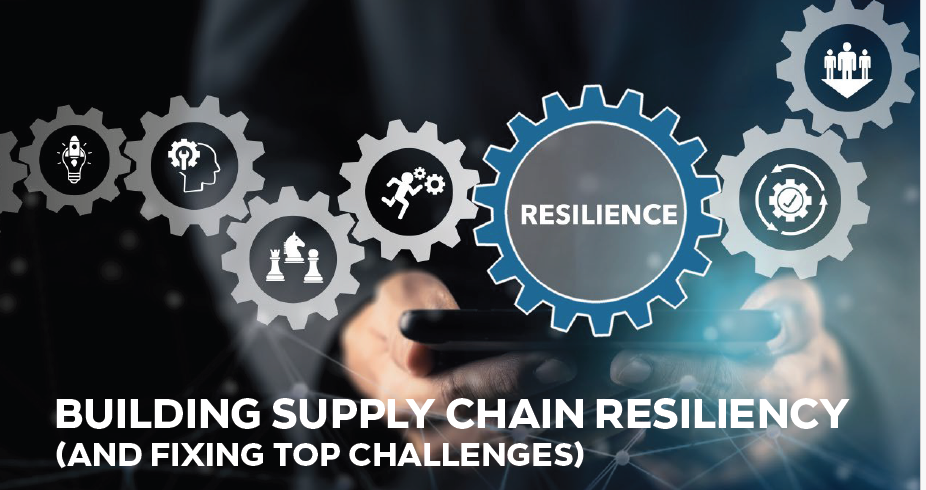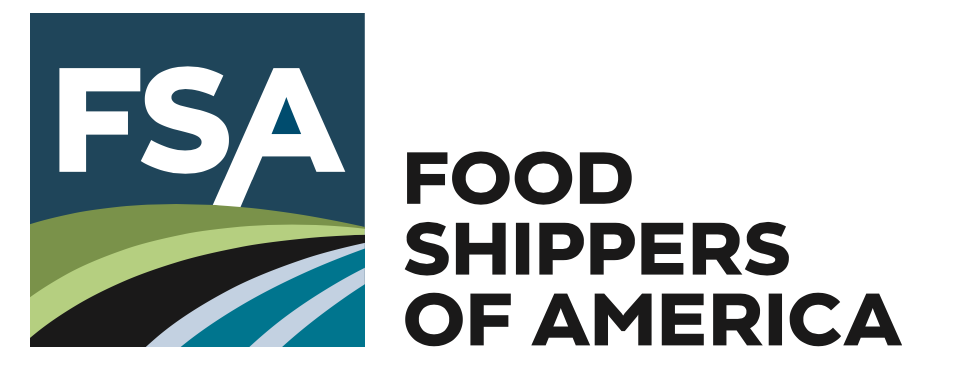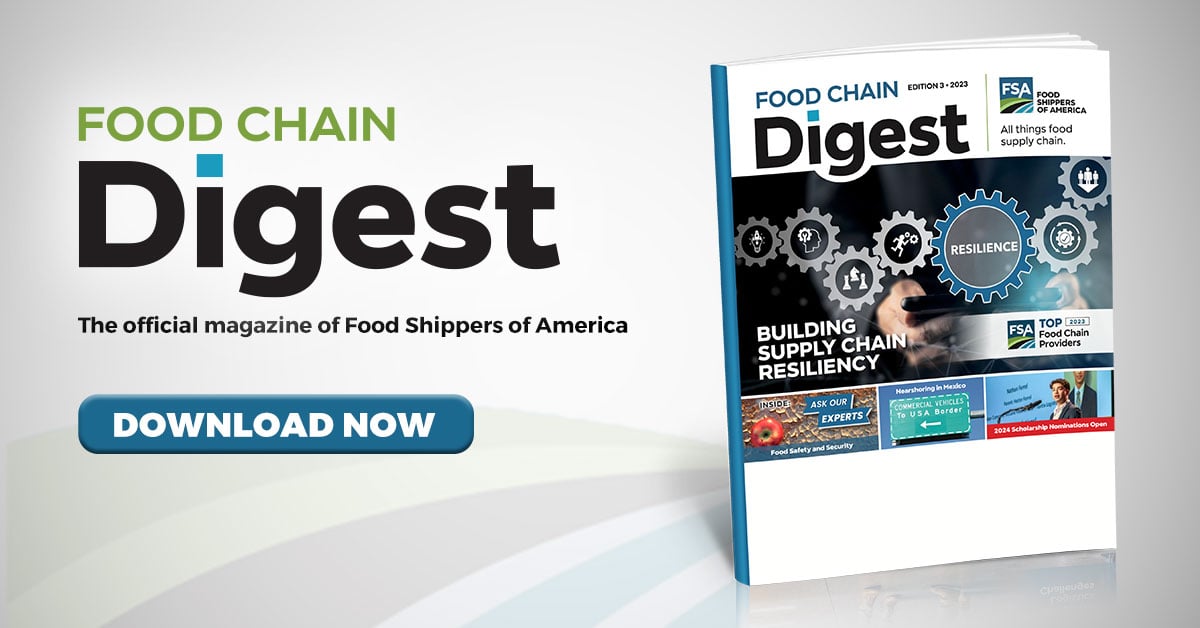Building Supply Chain Resiliency (and Fixing Top Challenges)
by Staff, on Nov 4, 2023 5:30:00 AM

Many supply chain professionals are focused on addressing supply chain disruption risks and ensuring resiliency of their logistics operations to best serve customers.
Due in part to continuous investment in logistics, U.S. business logistics costs now stand at a record $2.3 trillion (was $1.85 trillion last year), representing 9.1% of national GDP—the highest percentage of GDP ever.
While food companies continue to invest time and resources to build resiliency, they also focus on these four areas to combat supply chain vulnerabilities and create efficiencies: build visibility, diversify and localize more of your suppliers, standardize your processes, and focus on planning and forecasting.
Maximize Food Chain Visibility
At the heart of an agile supply chain is a set of processes that enables food companies to effectively channel resources, enhance inventory management, and increase productivity. These processes also allow companies to better control the production and/or sale of goods, materials and finished products to stay on top of customer demand.
A good example of supply chain agility involves a partnership between ArrowStream, Inc. (a major foodservice cloud platform for supply chain intelligence), FoodINTransit (a managed services logistics company serving the foodservice industry), and FourKites (a supply chain visibility platform). With the foodservice industry struggling to counteract increasing supply chain uncertainty and price pressure, ArrowStream and FoodINTransit teamed up to launch Freight Visibility to FoodINTransit’s customers to create a new level of control and real-time predictive awareness. Leveraging the partnerships with both FourKites and FoodINTransit, ArrowStream developed an integrated, alert-driven view into sales demand, distributor inventory positions, purchase order status, and live shipment tracking. This enabled FoodINTransit to make more proactive decisions to prevent stockouts, reduce food waste, reduce emergency deliveries, and adjust their network to keep critical products flowing. Since implementing ArrowStream’s solution, FoodINTransit customers have experienced an average 7% reduction in late deliveries to their inbound distributors.
ON AVERAGE, FOOD CHAIN DISRUPTION CAN COST 45% OF ONE YEAR’S PROFITS OVER THE COURSE OF A DECADE. TO ACHIEVE THE DESIRED VISIBILITY, AGILITY, AND TRACEABILITY, ORGANIZATIONS MUST IMPLEMENT EDUCATED PLANNING INTO THEIR RESILIENCY STRATEGIES.
Diversify and Localize Suppliers
Building resilience requires establishing relationships with multiple suppliers and key stakeholders within your food chain. Within the past two years, more than 70% of supply chain leaders have already made changes to the size and number of locations in their supply chain network, and 51% have increased the number of locations, according to a recent Gartner survey among 403 supply chain leaders.
These findings illustrate the need to adapt networks that meet new market challenges. To build food chain resilience, some supply chain managers spread out their procurement so they aren’t tied to too few suppliers - especially for their most vital materials, products and processes. Sometimes referred to “multiple sourcing,” this practice helps to minimize your business risk because in a time of disruption you have multiple suppliers of the same materials to lean on. In addition, establishing cooperative relationships with multiple suppliers allows you to adjust your forecasts, orders, and increase sales more easily.
Standardize Processes
This allows companies to easily move production among plants or distribution of finished food products among distribution centers to accelerate recovery and improve real-time response. This can entail everything from utilizing blockchain throughout your entire network of suppliers to standardizing your accounts payable processes.
To begin, align your procurement strategy with suppliers to create strong network relationships. In addition, synchronize supply chain planning and execution, as well as how often you update your data and future company projections.
Focus on Planning and Forecasting
On average, food chain disruption can cost 45% of one year’s profits over the course of a decade. To achieve the desired visibility, agility, and traceability, organizations must implement educated planning into their resiliency strategies. Keep in mind that excess supply chain costs are not about transportation, logistics, and warehousing but can be attributable to manufacturing or production inefficiencies. Often at the root of it all: forecasting and planning.
Strategic, long-range supply chain planning with a heavy focus on forecasting and planning requires an established, strategic framework for your supply chain. This includes a deep dive into your business and its suppliers with the goal of improving operations, standardizing processes, and planning for potential disruption.
For example, Sunsweet Growers (a major producer of dried fruits) found that while it was managing distribution operations well, high production costs were inflating end-to-end supply chain expenditures. Upon further exploration, the company found that its distribution network was partly behind the problems.
Sunsweet explored network redesign options to eliminate some production costs and shifted its approach to demand forecasting from a manual forecasting approach using only spreadsheets to an elaborate use of supply chain planning technology. Sunsweet also implemented a sales and operations planning program (S&OP) that enabled plant resource requirements to be anticipated months (rather than weeks) in advance. As the overall improvement plan passed through its five phases, Sunsweet was able to reduce production costs, increase in forecasting accuracy, reduce overtime in production facilities, significantly reduce finished-goods spoilage, and cut the number of U.S. warehouses from 28 to just eight. In addition, a transportation cost-per-unit remained static for two years despite increased utilization of costly refrigerated transport and rising fuel costs.
WITHIN THE PAST TWO YEARS, MORE THAN 70% OF SUPPLY CHAIN LEADERS HAVE ALREADY MADE CHANGES TO THE SIZE AND NUMBER OF LOCATIONS IN THEIR SUPPLY CHAIN NETWORK, AND 51% HAVE INCREASED THE NUMBER OF LOCATIONS, ACCORDING TO A RECENT GARTNER SURVEY AMONG 403 SUPPLY CHAIN LEADERS.
Interested in having access to this article in its entirety?
It was published in Edition 3 of Food Chain Digest, the official magazine of Food Shippers of America. Download your FREE copy now.



